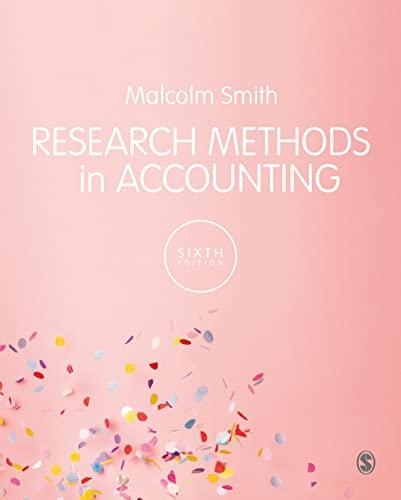
PART B - THEORY Address all of the following points using examples where appropriate. Please make sure your answer is logically structured Question 7 Financial statements are prepared for a range of different business entities. 1. Identify the different entities financial statements can be prepared for. 2. Identify the different financial statements and explain the type of information contained within each of the financial statements. 3. Explain the purpose of accounting information and how this purpose is linked to the needs of stakeholders involved with different entities. Question & Accounting information is guided by various principles, assumptions and qualitative characteristics. 1. Describe the process of generating accounting information 2. Identify and describe the assumptions, qualitative characteristics and framework which guide the preparation of accounting information 3. Explain why accountants have flexibility in accounting choices. 4. Explain how the assumptions and qualitative characteristics of accounting guide the choice of the following accounting methods. a. Revenue recognition b. Accounting for bad debts Question 2 Accountants have the ability to choose different ways to report accounting information, and this choice can have an impact on the reported financial performance and position of an entity. 1. Identify and describe in detail the different methods and/or approaches available when making reporting decisions for: a. Revenue recognition b. Accounting for uncollectible receivables (bad debts, e.g. Direct write-off method, Allowance method, % of sales approach, % of receivables approach, ageing of accounts receivable approach) 2. Explain the advantages and disadvantages of each method you have just described in part one of this question. 3. Explain why accountants are able to choose different ways to report accounting information. In your answer you may like to discuss the advantages and disadvantages of being able to make different accounting choices with brief reference to the article Gowthorpe and Amat (2005), Creative Accounting: Some Ethical Issues of Macro- and Micro-Manipulation. 4. Explain how the choice of these accounting methods and/or approaches can be used by managers for earnings management. In your answer you may like to refer to how the assumptions and qualitative characteristics of accounting reduce camings management. 11 Question 10 Predicting future cash flows is important to determine the viability and value of a company. 1. Describe the different components of the cash flow statement and the information it provides to users. 2. Explain the relation between the following accruals and future cash flow as suggested by Barth, Cram and Nelson (2001). a. Accounts receivable b. Accounts payable c. Inventory d. Depreciation and amortization







